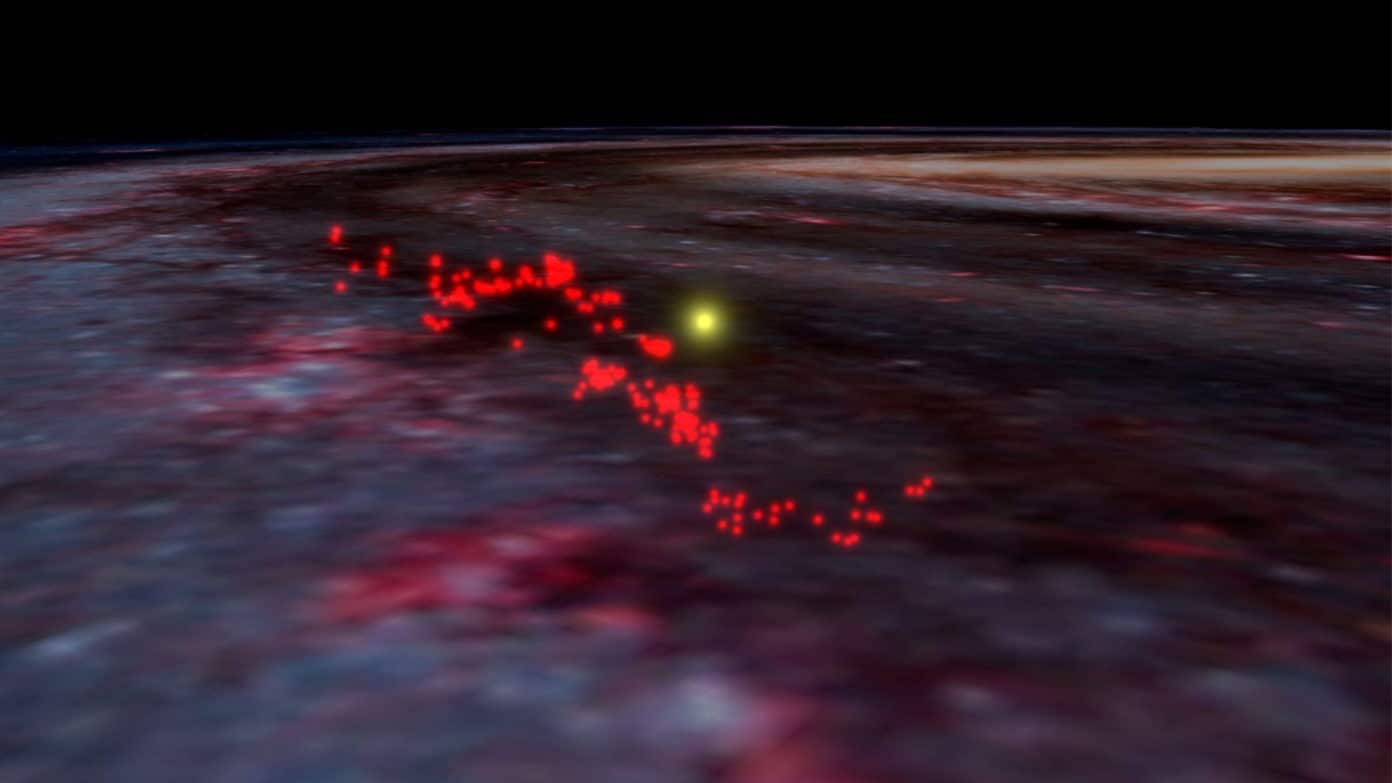Astronomers from the Harvard University have discovered a monolithic, wave-shaped gaseous structure- consisting of interconnected stellar nurseries in our galaxy. Named as “Radcliffe Wave”, the structure is the largest ever seen in our Milky Way.
The current structure is whopping 9,000 light-years long and 400 light-years, with a wave-like shape and is spread across 500 light-years around the mid-plane of our galaxy’s disk.
Astronomers combined the data from Gaia (A spacecraft of the European Space Agency) with other measurements and constructed a detailed, 3D map of interstellar matter in the Milky Way.
From the resulting data, they observed this massive gaseous structure. Astronomers also observed an unexpected pattern in the spiral arm of Mil Way close to Earth.
Alyssa Goodman, the Robert Wheeler Willson Professor of Applied Astronomy, a research associate at the Smithsonian Institution, said, “No astronomer expected that we live next to a giant, wave-like collection of gas — or that it forms the local arm of the Milky Way. We were completely shocked when we first realized how long and straight the Radcliffe Wave is, looking down on it from above in 3D — but how sinusoidal it is when viewed from Earth. The Wave’s very existence is forcing us to rethink our understanding of the Milky Way’s 3D structure.”
Catherine Zucker, Harvard graduate student, said, “We suspected there might be larger structures that we just couldn’t put in context. So, to create an accurate map of our solar neighborhood, we combined observations from space telescopes like Gaia with astrostatistics, data visualization, and numerical simulations.”
Anyhow, this seems to be a shocking discovery as no one expected such a huge structure there.
Research published in Nature

